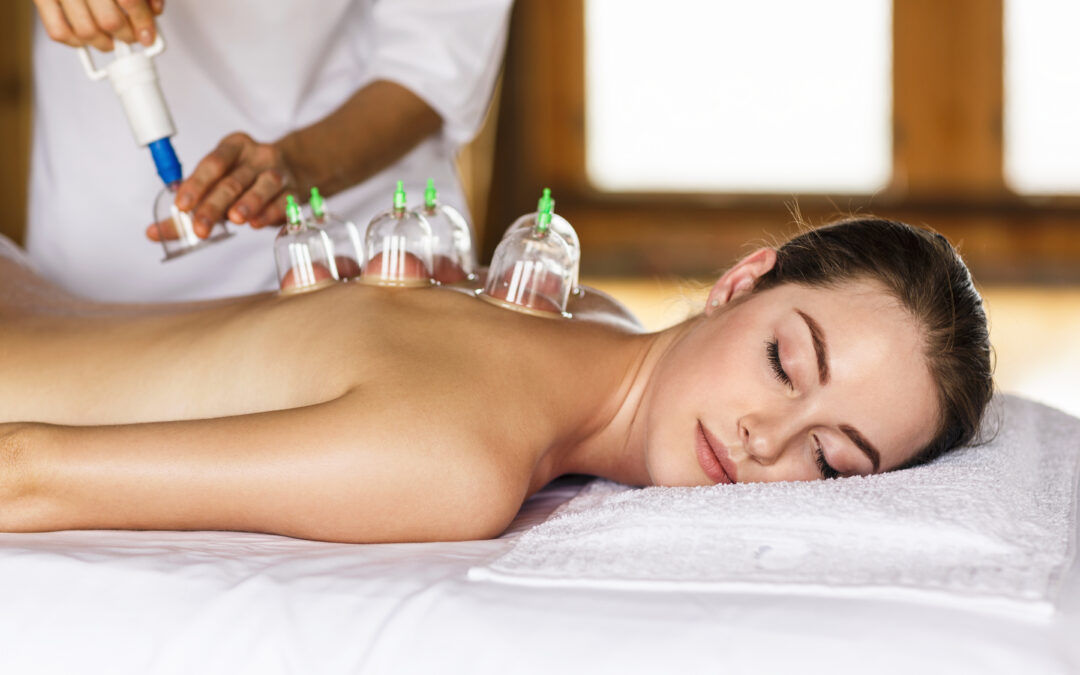What are those big red circles you see on backs all across the internet and in the Olympic swimming pool? Those circles are the immediate result of cupping therapy. You might mistake cupping as an Instagram-era fad, but it actually has been a part of Chinese, Egyptian, and Middle Eastern medical traditions since 1,550 B.C., according to WebMD. The practice involves placing specially designed cups on the skin to form a suction, which decompresses underlying muscle tissue. Individuals claim the therapy to be the direct cause of their reduced inflammation, faster recovery, and even healed acne and cured chronic headaches.
How is cupping different from a massage?
Massage and cupping both manipulate muscle tissue to increase blood flow and relaxation in the body to promote recovery and healing. Some may say that cupping mimics the effects of a deep tissue massage. Although massage and cupping achieve similar results, the two are actually opposite in mechanism. A massage works by applying pressure to the muscles, but cupping works by lifting the tissue away from bones with specially designed cups. Cupping decompresses the muscle tissue while a massage or muscle rolling relives tension by compressing the muscle tissue.
How does it work?
Traditional methods of cupping use glass cups that therapists use to hold a lit flame. As the flame goes out, the therapist will place the open side of the dome onto the skin, where it will form a suction as the air cools. Modern technology has created alternatives to using flame by inventing cups with a rubber pump at the top to form a suction. Cups can also be made of bamboo, plastic, or silicone. Depending on the type of cup used and the treatment plan, the therapists may glide the cups across the skin as a type of “massage” with oil or lotion.
The cups are left on for a few minutes at a time. The suction raises the skin and the underlying muscle tissue, causing the blood vessels to dilate. Depending on the bodily area that needs attention, the cups can be placed on the upper and lower back, quads, calves, and hamstrings.
Is cupping painful?
Despite the bruises that can last for a few days, the process and the resulting days are mostly painless. The pressure should be light to medium, but the residual reddish or purple spots can last for several days. Don’t worry! This is a good thing! The bruising comes from tiny broken capillaries that jumpstart the healing process. Since Michael Phelps’ spotted debut in 2016, cupping marks have become quite trendy.
How can cupping therapy benefit me?
Cupping reduces inflammation by increasing blood and lymphatic circulation, which assists in the body’s natural detoxification process. The nervous system switches to the parasympathetic nervous system, that allows the body to fully relax by slowing the heart rate and relaxes muscles small and large. When this nervous system is activated, the healing mechanisms of the body kick into gear.
For athletes and those that train hard and often, cupping can be a great way to speed up the recovery process after intense exercise. The promotion of blood flow allows for accelerated healing of the nervous system. Many athletes claim that cupping enhances their overall athletic performance.
Is cupping right for me?
Cupping is generally a very safe practice when administered by a trained professional. The practice should be avoided by the elderly or others with thin skin. Those with cancer, hemophilia, organ failure or similar conditions to any of the above should refrain from cupping therapy. Those with chronic illness should also avoid cupping or only receive cupping when the illness is in a remissive or dormant phase. If you have a sunburn, open wounds, any type of infection, or are pregnant, cupping should be saved for a later date. Much like after a massage, it’s important to stay hydrated to assist in the recovery and detoxification processes.
Cupping is a great addition to a healthy active lifestyle. Give us a call or book online today and see how cupping can improve your life.

